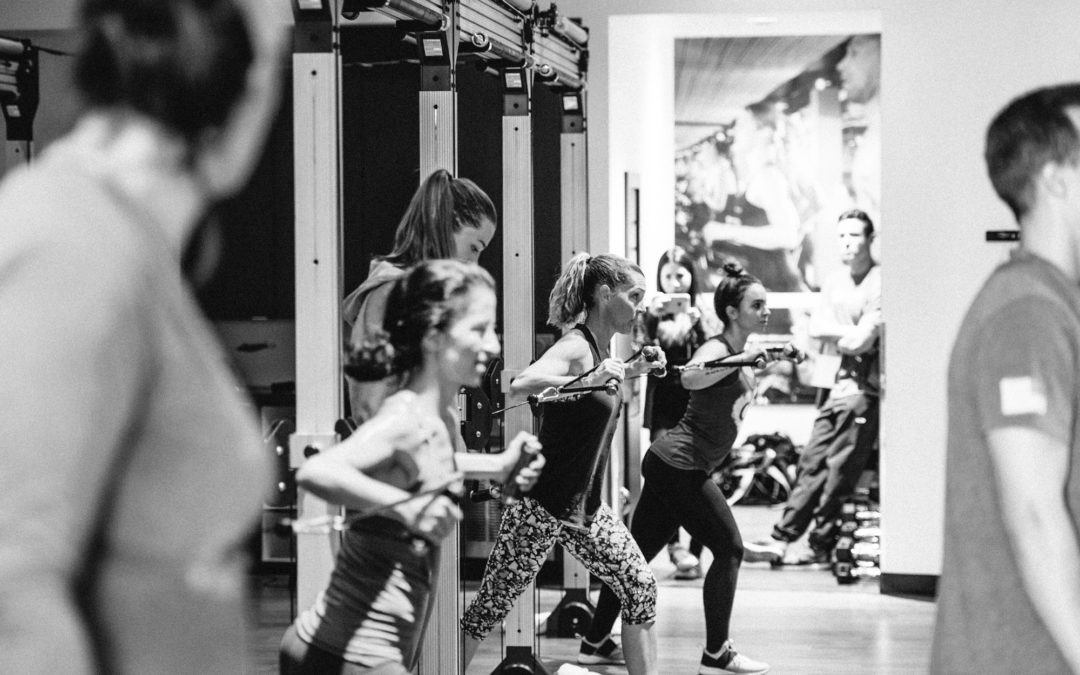By Julie Kennington
March 30, 2017
If we randomly surveyed personal trainers and asked them if they train their clients for power, what percentage would say they do? Which demographics train for power? Do trainers reserve power for athletes or the younger population? Who are the lucky few training for power?
The research is compelling and clear. Everyone should train for power.
Muscle strength begins to decline after the age of 30 and the loss of power is more prominent. What are the factors contributing to these decreases? Power is a product of force and speed. Therefore, factors that contribute to loss of power are a combination of decreased force production (musculoskeletal system) and contractile speed (neuromuscular system).
Musculoskeletal System
Researchers have documented sarcopenia (loss of muscle) with aging as shown with a drop in the cross-sectional area of muscle. Sarcopenia is most dramatic in type II fibers (fast contracting) and motor units.
Neuromuscular System
Aging has been associated with reduced motor neuron conduction velocities (the speed of the electrical impulse through a nerve), decreased motor nerve myelination (production of myelin sheath that insulates the nerve), reduced neuromuscular transmission (nerve impulse that initiates muscular contraction) and decreased levels of excitation-contraction coupling (decrease in the electrical action potential and mechanical muscle contraction) (Miljkovic, 2015).
In a nut shell, as we age, the quantity and the quality of our muscles decrease.
We know athletes need to be explosive. It’s not the strong and slow that wins the game. It’s the powerful, the explosive. It’s who can generate the most force in the shortest amount of time.
What about me? What about my parents? We don’t have to throw a baseball 100 MPH or be the first off the line to tackle our opponent. Why do I care about being explosive?
As a parent of toddlers there has been more than one occasion when I’ve had to swoop my kids up quickly to avoid an accident. When we go skiing I often have to chase after a lost ski then quickly get back up the mountain to get the ski back on. If only I had trained in the gym to be more powerful.
As baby boomers get older, fall prevention is critical and there is a strong association between fall prevention and leg power. Furthermore, a baby boomer’s ability to generate power is dependent not only on the rate of age-related decline, but also on the level of peak performance achieved earlier in adult life (Hardy, 2010). Sounds to me like we all better get moving and quick!
Now that we are in agreement that power is essential at any age, let’s get clear on what that means and what it doesn’t mean. It doesn’t mean we all need to become power lifters performing clean and jerks and snatches all day. My grandma’s power workout will be a walk in the park for me and my power workout will leave a 25-year old NFL linebacker wondering why he got out of bed. Conversely, the linebacker’s workout will send me and grandma to the hospital. Regardless of the workout (strength, power, endurance) and who the workout is for we need to push our clients to the top of and maybe a little outside their comfort zone. Anything else will end in injury.
Three Fundamental Components When Programming for Power
- Speed of movement: The goal is to contract the muscle as quickly as possible, which won’t happen if we use our 1RM weight.
- Level of resistance: Many sports and conditioning coaches would suggest using a weight anywhere from 50-70% of your 1RM. That would translate to a weight you can execute 12-18 reps with good form.
- Equipment: Pneumatics, tubing or bands are great choices to train for power.
Free weights and stacked weight are not ideal as inertia (resistance to changes in motion) and momentum (product of mass times velocity) are created when increased speed is the goal. The potential for injury is augmented when the weight lifted continues to move and the body stops.
Pneumatic cable trainers are great for power for several reasons. Inertia and momentum are not created eliminating fly away. This means there is reduced shock loading to muscles, connective tissues and joints. Furthermore, the muscles remain active and engaged throughout the entire range of motion at varying velocities. Finally, pneumatic cable trainers are equipped to measure power output in watts. The compelling argument for measuring watts to track progress is, unlike other measurements (i.e. heart rate), watts don’t lie.
Recently, Flexline Fitness launched the world’s first Air Dynamic Cable Trainer (Air DCT). The Air DCT achieves all the benefits of pneumatics plus the ability to adjust weight on the fly at any point in the range of motion, allowing users to easily find their sweet spot for producing the most power.
In no way should the increased awareness of power make us “power hungry”, shifting all of our programming to power. It should simply find it’s place along with strength, hypertrophy, endurance, balance and flexibility. Who knows, maybe someday soon it will be listed as one of the components of fitness.
References
Miljkovic, Natasa, Jae-Young Lim, Iva Miljkovic, and Walter R. Frontera. “Aging of Skeletal Muscle Fibers.” Annals of Rehabilitation Medicine. Korean Academy of Rehabilitation Medicine, Apr. 2015. Web. 30 Mar. 2017.
Hardy, Rebecca, Rachel Cooper, Imran Shah, Stephen Harridge, Jack Guralnik, and Diana Kuh. “Is Chair Rise Performance a Useful Measure of Leg Power?” Aging Clinical and Experimental Research. U.S. National Library of Medicine, Oct. 2010. Web. 30 Mar. 2017.

